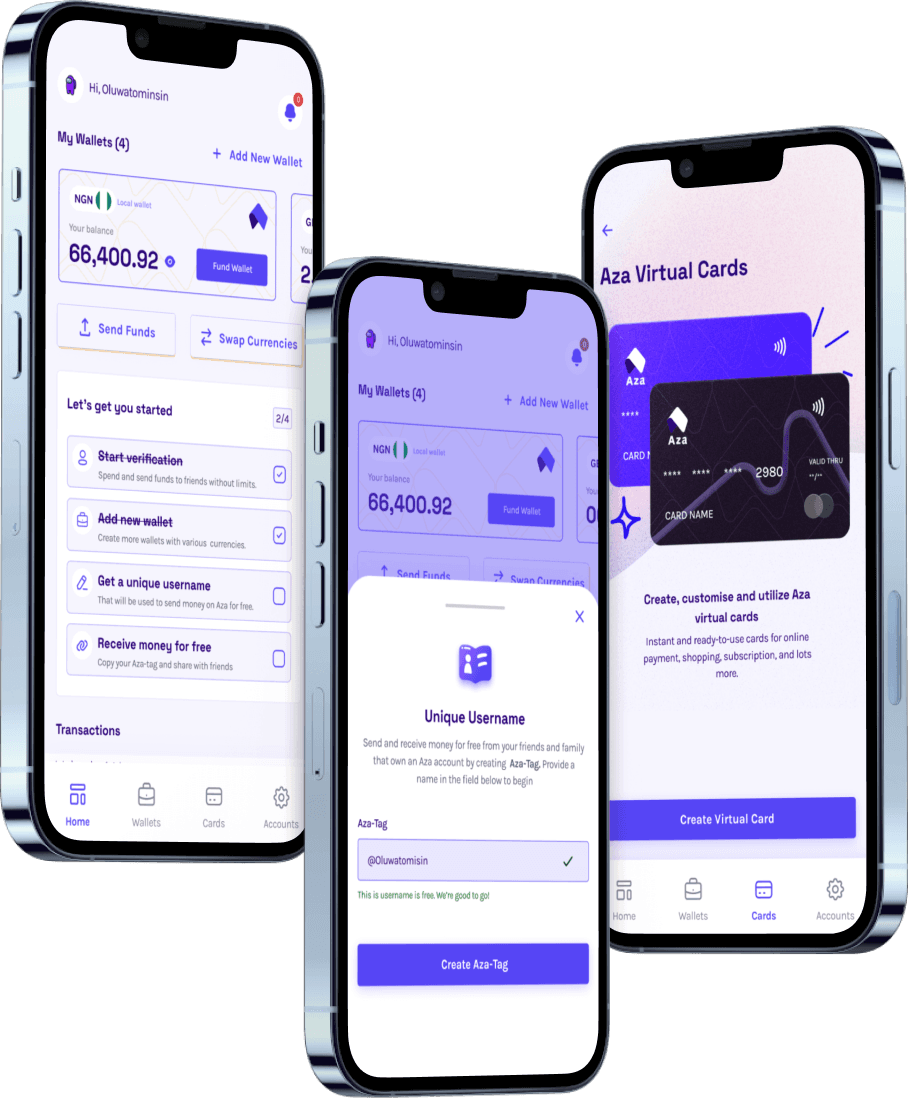The Best Ways to Save and Invest Your Money

Saving money is one of the most important financial habits you can develop. Yet, it's often easier said than done. Whether you're trying to save for a rainy day, a dream vacation, or a big investment, learning how to save effectively is a crucial step toward financial independence. But where do you even begin? What are the best ways to save without feeling deprived or stressed?
In this blog post, we’ll break down how you can make saving money a sustainable and even enjoyable habit. From small changes in your day-to-day spending to mastering the art of budgeting and investment, we’ll guide you through practical tips that will help you save more and achieve financial security over time.
Understanding the Importance of Saving Money
Before we dive into the practical steps of saving, it’s essential to understand why saving money is so critical. We often hear that saving money is a smart decision, but why? Here are a few reasons why it’s a game-changer for your financial health:
Financial Security: Having a savings cushion allows you to handle unexpected expenses, such as medical emergencies, car repairs, or sudden job loss. Without savings, you might be forced to rely on credit cards or loans to manage these expenses, which could put you into debt.
Achieving Goals: Whether it’s buying a home, going on a dream vacation, or starting a business, saving is the first step toward reaching your goals. By setting aside money regularly, you’re ensuring that you have the funds available when the time comes to make your dreams a reality.
Peace of Mind: Knowing that you have money saved gives you peace of mind. You won’t have to stress every time an unexpected bill arrives, or when your car breaks down. You’ll feel more secure knowing you have a financial cushion to fall back on.
Long-Term Wealth: Saving money consistently isn’t just about putting a few dollars away for a rainy day. It’s also about building long-term wealth through investments, such as stocks, bonds, or real estate. Over time, these investments can grow, allowing you to secure your financial future and live comfortably without constantly worrying about your finances.
Start with a Budget: The Foundation of Saving
The first step to becoming a better saver is creating a budget. A budget helps you track your income and expenses, so you can see exactly where your money is going. Without a clear understanding of how much you’re earning and spending, it’s easy to slip into financial habits that aren’t conducive to saving.
How to Create a Budget
Track Your Income: Start by listing all of your sources of income, including your salary, side gigs, passive income, or any other regular inflows of money.
List Your Expenses: Write down all of your monthly expenses, such as rent or mortgage, utilities, groceries, transportation, insurance, debt payments, and entertainment. Don’t forget to include irregular expenses like annual subscriptions or holiday gifts.
Identify Needs vs. Wants: Categorize your expenses into “needs” and “wants.” Needs are essentials like rent, utilities, and food. Wants are non-essentials like dining out, shopping, or entertainment. Being honest with yourself about what you truly need can help you make conscious decisions to reduce unnecessary spending.
Create a Savings Plan: Allocate a portion of your income for savings. Ideally, aim to save 20% of your income, but start with a smaller amount if needed. The key is consistency. Even saving a small percentage of your income each month can add up over time.
Adjust as Needed: Review your budget every few months to see if you need to make adjustments. If your income increases or your expenses change, adjust your savings plan accordingly.
How to Save More: Practical Tips for Everyday Savings
Once you have a budget in place, the next step is learning how to save more money. Here are some practical tips that can help you save more without feeling deprived:
1. Automate Your Savings
One of the best ways to save money consistently is by automating your savings. Set up automatic transfers from your checking account to a savings account every payday. This way, you won’t be tempted to spend the money before you save it. Many banks and financial apps even offer tools that round up your purchases to the nearest dollar and automatically transfer the difference into a savings account. It’s a simple, hands-off way to build your savings without even thinking about it.
2. Cut Back on Unnecessary Subscriptions
Take a look at all your subscriptions—magazines, streaming services, gym memberships, or premium apps—and see if you’re using them regularly. You’d be surprised how many people are paying for subscriptions they no longer need or use. Cancel any that you don’t use regularly or that are not essential to your daily life. This can free up extra money for your savings account without impacting your lifestyle.
3. Cook More at Home
Eating out frequently can drain your finances quickly. While it’s great to enjoy a meal at a restaurant now and then, cooking at home is a more affordable option. Meal prepping and planning can help you avoid impulse buying, save money, and reduce food waste. You can also make healthier meals at a fraction of the cost compared to dining out.
4. Use Cashback and Discount Programs
Take advantage of cashback offers and discount programs when shopping. Many credit cards offer cashback on purchases, and there are apps that help you find the best deals and discounts. By using these offers strategically, you can save money on everyday purchases. Just be careful not to overspend just to get the discount—it’s important to stay within your budget.
5. Buy Used or Refurbished Items
Before buying new items, consider purchasing used or refurbished ones. Many gently used products—whether it’s furniture, electronics, or clothing—are in great condition and can be bought at a fraction of the price of new items. Thrift stores, online marketplaces, and refurbished tech outlets can save you significant amounts of money.
6. Shop Smart During Sales
Sales events like Black Friday, Cyber Monday, and end-of-season clearances offer great opportunities to save. However, you should only purchase items you actually need or were already planning to buy. Don’t let the sale prices fool you into purchasing things you don’t really want or need.
Building an Emergency Fund: The Safety Net You Need
An emergency fund is one of the most important aspects of saving money. It’s a buffer that can help you cover unexpected expenses, such as medical bills, car repairs, or a sudden job loss. Without an emergency fund, you could be forced to rely on credit cards or loans to cover these expenses, which can put you into debt.
How Much Should You Save for an Emergency Fund?
The general rule of thumb is to save at least three to six months’ worth of living expenses in an emergency fund. Start small, but aim to build your emergency fund as quickly as possible. If you can’t reach three months’ worth of expenses right away, that’s okay—just save what you can and gradually increase it.
Where to Keep Your Emergency Fund?
Keep your emergency fund in a high-yield savings account or money market account. These types of accounts offer better interest rates than regular savings accounts, so your money can grow while remaining easily accessible when you need it. Avoid investing your emergency fund in stocks or long-term investments, as you need to be able to access it quickly in case of an emergency.
Investing for Long-Term Wealth
Once you’ve established an emergency fund and have a consistent savings habit, the next step is to start thinking about long-term wealth building through investments. Saving money is great, but investing it wisely can significantly accelerate your financial growth.
Types of Investments
Stock Market: Investing in individual stocks or index funds can offer high returns over time. However, the stock market can also be volatile, so it’s important to invest for the long-term and diversify your portfolio.
Real Estate: Investing in real estate is another way to build wealth. You can purchase rental properties to generate passive income or invest in property for future appreciation.
Retirement Accounts: Contributing to retirement accounts, such as a 401(k) or an IRA, can provide tax advantages while helping you save for retirement. The earlier you start, the more your money will grow due to compound interest.
Bonds: Bonds are a safer investment option compared to stocks. They provide steady income and are less volatile, making them a good choice for conservative investors.
How to Get Started with Investing
Start by educating yourself about different investment options. You can open a brokerage account or use investment apps that allow you to start with small amounts of money. If you’re unsure where to start, consider speaking with a financial advisor who can guide you through the process.
Final Thoughts
Saving money is a skill that anyone can learn, regardless of your income level or financial situation. By following a few simple strategies—such as creating a budget, automating your savings, and investing for the future—you can secure your financial future and achieve your goals. The key to successful saving is consistency, discipline, and making mindful financial choices that align with your long-term objectives.
Start small, stay committed, and watch your savings grow over time. With a solid plan and a bit of patience, you can build a strong financial foundation and live life on your terms. Remember, the best time to start saving is now—because your future self will thank you.


